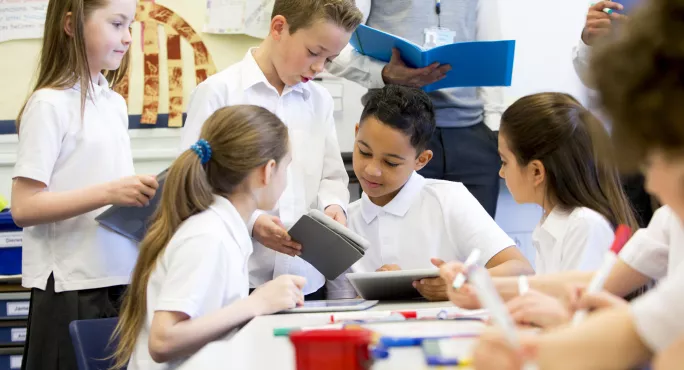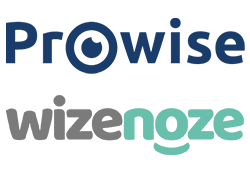How edtech can unleash pupil creativity

Imagine you’re an English teacher about to begin a unit on Romeo and Juliet. But instead of the PowerPoint and worksheets you’ve been using for years, your senior leadership team asks you to incorporate some of the technology they’ve invested in: an interactive whiteboard and set of Chromebooks.
Although learning about educational technology may at first feel like another burdensome task on an already never-ending to-do list, quality tools and products are often simple to learn and enable you to breathe new life into your lessons and boost creativity in the classroom.
This is important for several reasons. For a start, students are entering a very different kind of job market than in the past. A recent study by the World Economic Forum showed that increasing job automation will lead to a growing demand for uniquely human skills, such as creativity - something that international educator Sir Ken Robinson has been saying for years. If we want our students to do well, therefore, we must teach skills that incorporate technology and promote creativity.
And, of course, creativity is also key in the here and now. It comes from students using their imagination, engaging with the content in front of them and coming up with new ideas. It’s a vital part of the learning process, and technology is an excellent tool for inspiring it. The interactive nature of modern technology encourages students’ curiosity and facilitates collaboration that encourages the spread of ideas.
Going back to your Romeo and Juliet unit, therefore, here are a just a couple of options to get you started.
Prowise Presenter
Prowise Presenter is a free tool that allows teachers to add engaging and interactive content such as videos, 3D models, quizzes and mind-maps to their presentations. If your students have access to personal devices, you can share these presentations with them directly, so they can interact with them as you go.
For the Romeo and Juliet lesson, you might start by embedding a movie clip into your presentation, and then use Prowise Presenter’s built-in timer to allow your students a two-minute “turn and talk” about the clip. Afterwards, you can open the mind-mapping tools to plot the story arc together as a class. Finally, using the quiz tool, you can have your students take a pre-built quiz on their devices, and display the results on your smartboard to review the most commonly missed questions.
Virtual tours
Virtual tours are a great way to use your interactive whiteboard or Chromebooks as a window into the content. Google Tour Creator, for example, allows teachers or students to use the images from Google Maps and Google Earth to create 360-degree tours of almost anywhere on Earth. After selecting the images you want to use, you can add text or audio annotation to provide interesting facts and information about that location.
For a Romeo and Juliet lesson, why not start in Verona? Or, better yet, ask the students to create their own tours using information from the text, your lessons or independent research to annotate the images they choose.
Podcasting
As podcasts have continued to grow in popularity, many educators are finding them an excellent way to create and share content. By researching, recording and editing their own shows, students can demonstrate their understanding in profoundly creative ways - and it’s accessible, too. Soundtrap, for example, is an excellent web-based editing program that allows students to work collaboratively from their personal devices to produce professional quality audio.
Software programs such as Wizenoze Web for Classrooms, which is integrated into the free educational software Prowise Presenter, curates credible and safe online resources for students, and can also be helpful when encouraging pupils to explore their creativity. Say you want your pupils to create a podcast episode based on a historical figure: introducing them to Wizenoze will give them confidence in their ability to seek out high-quality, accurate information. They can stop worrying about their sources and concentrate their energy on making an engaging product.
For Romeo and Juliet, students might create a news bulletin recapping events from the story or host a talk show with one of the characters. You might even dive into the potential of cross-curricular teaching, which is made easier through edtech, and have your students compose a piece of music based on an event from the story.
Interactive whiteboards for student use
Perhaps your students are writing a diary entry from Romeo’s perspective on the night he meets Juliet and one of your students finishes before the rest of the class. Instead of asking that student to do “busy work” or read silently, you could ask him or her to use the Prowise Touchscreen to represent Romeo’s emotions visually.
They might decide to do a digital drawing using shapes, create a collage in Prowise Presenter, make a meme or a gif, build an infographic, or even create a series of tweets from Romeo. Now, not only have you added another level of higher-order creative thinking to this assignment, but your student is also practising using a high-tech device that they don’t have access to at home.
Ready, set, create
Edtech has the potential to infuse both direct instruction and student-centred learning with creativity. It allows students to connect with content in meaningful ways, enhancing their practical skills at the same time as it unleashes their imaginations.
By teaching in this way, you’ll be giving yourself a new passion for teaching old content at the same time as you are preparing your students for a future that will require both creative and technological savvy - a future that is both innovative and exciting.
Emma Pass is a secondary English teacher and educational technology consultant. She tweets @emmabpass and blogs at EdTechEmma.com
